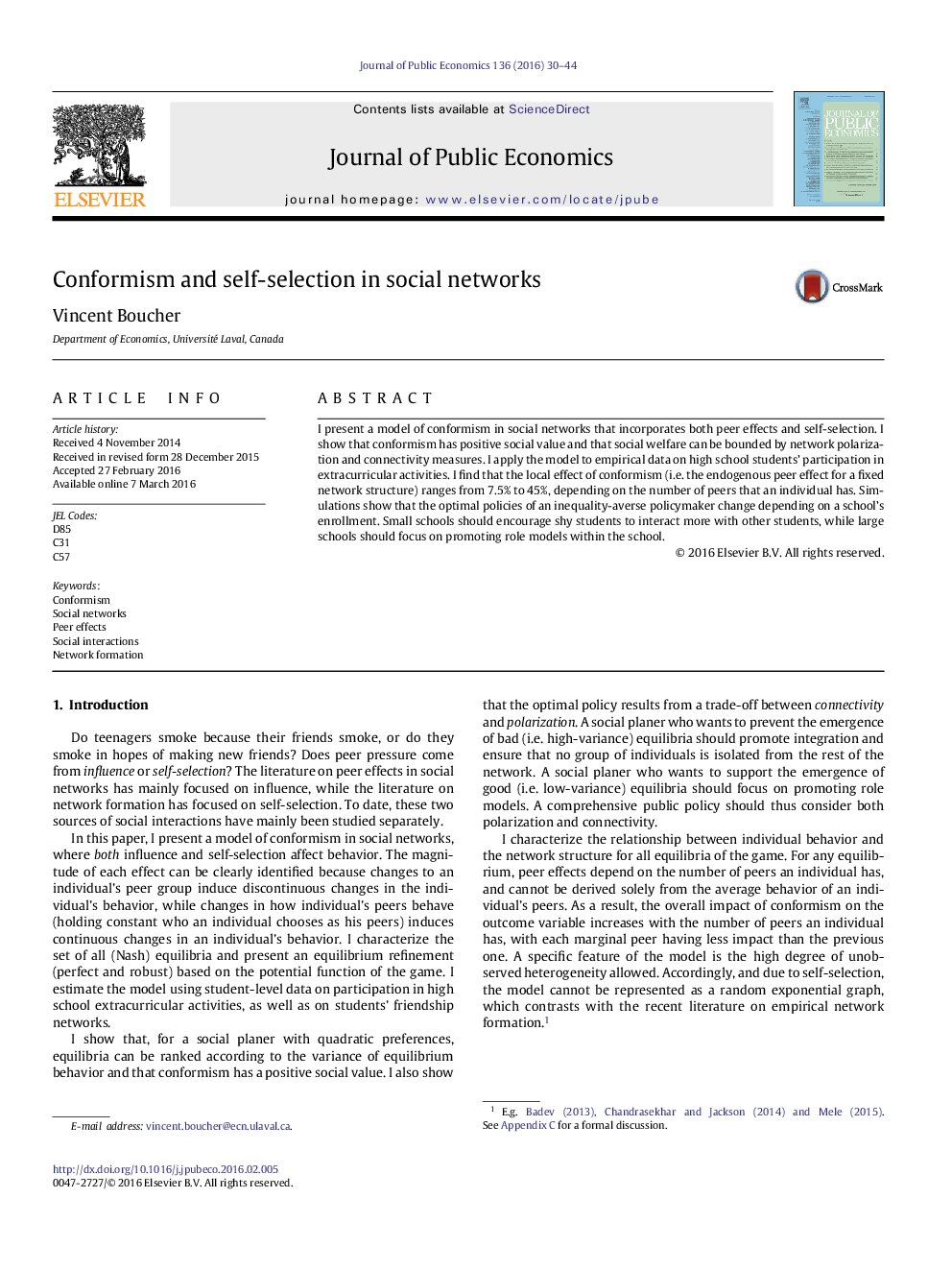| Article ID | Journal | Published Year | Pages | File Type |
|---|---|---|---|---|
| 969677 | Journal of Public Economics | 2016 | 15 Pages |
•I present a model of conformism in social networks that incorporates both peer effects and self–selection.•I find and characterize the set of all equilibria.•I find that conformism has social value.•I find a local effect of conformism ranging from 7.5% to 45%, depending on the individuals' number of peers.
I present a model of conformism in social networks that incorporates both peer effects and self-selection. I show that conformism has positive social value and that social welfare can be bounded by network polarization and connectivity measures. I apply the model to empirical data on high school students' participation in extracurricular activities. I find that the local effect of conformism (i.e. the endogenous peer effect for a fixed network structure) ranges from 7.5% to 45%, depending on the number of peers that an individual has. Simulations show that the optimal policies of an inequality-averse policymaker change depending on a school's enrollment. Small schools should encourage shy students to interact more with other students, while large schools should focus on promoting role models within the school.
